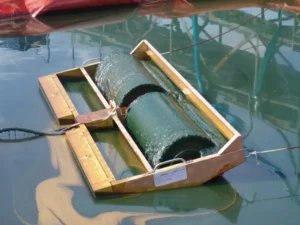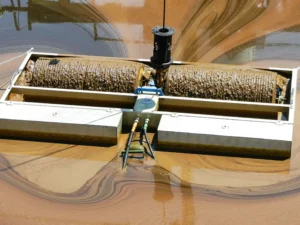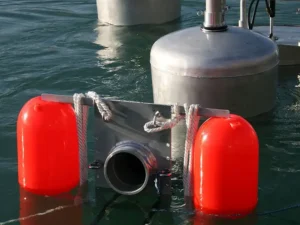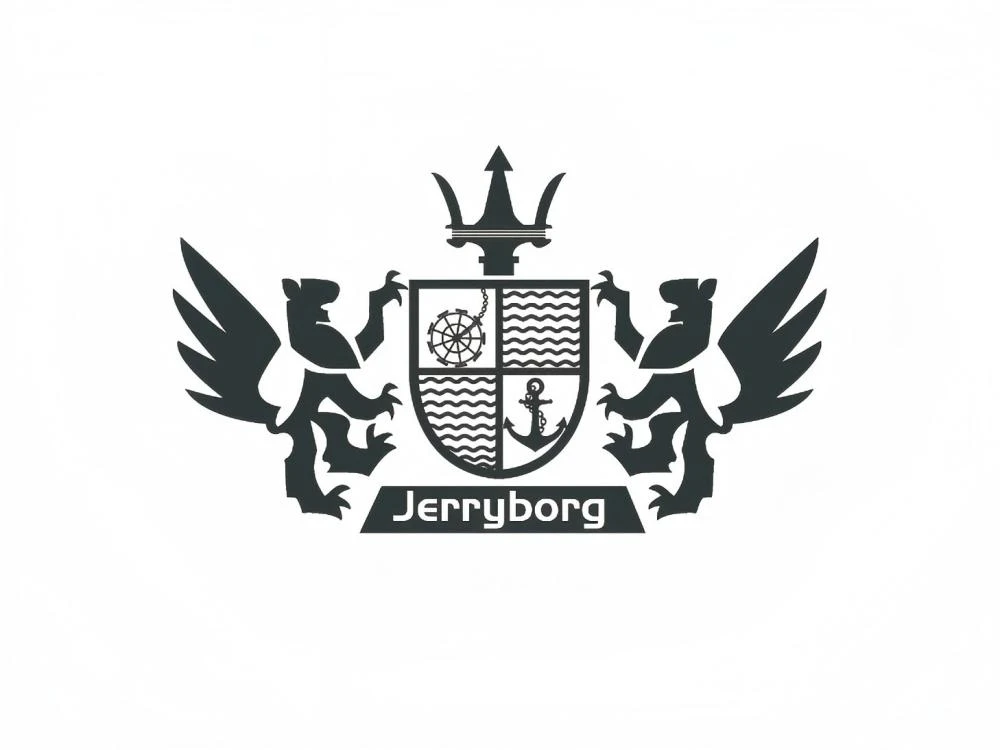L'industrie maritime, composée de navires et de bateaux, utilise du pétrole pour ses activités. Ces navires consomment de grandes quantités de pétrole et peuvent provoquer des marées noires. L'évacuation de ces huiles usées dans l'océan serait une mauvaise idée. Nous pouvons sauver l'eau de ces hydrocarbures en utilisant différents types de récupérateurs d'hydrocarbures.
Il est essentiel de savoir que ce pétrole forme une couche à la surface de l'eau. La couche de pétrole empêche l'apport d'oxygène et de lumière solaire aux animaux marins, ce qui entraîne la mort de nombreux animaux. Cependant, nous pouvons minimiser ce risque en pratiquant l'écrémage.
Mais le processus d'écrémage est moins bien compris. Il existe différents types d'écrémeurs. Il est essentiel de reconnaître chaque type et de l'utiliser en conséquence. Cet article détaillé explorera tous ces types et leur fonctionnement. C'est parti !
Aperçu de l'écrémage du pétrole

La gravité spécifique est l'un des principes de fonctionnement de l'écrémage. Besoin de connaître la gravité spécifique ? Il s'agit d'un rapport de densité entre deux fluides. L'un est le fluide général, l'autre le fluide de référence. Le fluide de référence pour les liquides est l'eau.
Le processus d'écrémage fait appel à des écrémeurs robustes. Ces machines collectent l'huile et la séparent du fluide ou de l'eau. Leur norme d'utilisation est accessible aux différentes raffineries de pétrole. Ces écrémeurs jouent un rôle crucial dans l'élimination du pétrole de l'eau lors de l'écrémage.
Les industries marines produisent des huiles usées et des hydrocarbures de faible densité. Par exemple, les grands navires peuvent déverser des hydrocarbures en raison d'un dysfonctionnement. Lorsque les huiles usagées sont jetées dans les océans, elles commencent à flotter à la surface, ce qui constitue la première étape de la séparation des huiles.
La tension superficielle est une propriété qui permet l'écrémage. Cette propriété maintient les molécules du liquide serrées les unes contre les autres. Lorsque l'huile est drainée dans l'eau, la tension superficielle ne permet pas à l'huile de couler, et l'huile reste donc à la surface de l'eau.
C'est là que les écumeurs entrent en jeu. Ils profitent de la tension superficielle et recueillent l'huile à la surface, car celle-ci ne la laisse pas couler. À cet égard, les écumeurs oléophiles (qui aiment le pétrole) sont très utiles. Ils aiment le pétrole et y adhèrent, laissant l'eau intacte.
Types d'écrémeurs d'huile
Comme je l'ai dit, les écumeurs jouent un rôle crucial dans la séparation et l'élimination des hydrocarbures de la surface de l'eau. Sans eux, le processus d'écrémage serait incomplet. Il existe deux types principaux de récupérateurs d'hydrocarbures :
- Oléophile (qui aime l'huile)
- Oléophobe (qui déteste l'huile)
En outre, chacun d'entre eux comporte différents sous-types. Nous examinerons chacun de ces sous-types dans la section ci-dessous.
1- Ecrémeurs à disque (oléophiles)
Les écrémeurs à disque contiennent un grand nombre de disques pour attirer l'huile. Toutefois, certains écrémeurs à disque ne comportent qu'un seul disque. La quantité d'huile qui subit la séparation détermine son utilisation. Récupérateurs d'huile à disque Ils fonctionnent idéalement pour les huiles de faible à moyenne viscosité. Ils peuvent également travailler en pleine mer pour sauver la vie des animaux marins.
Voyons comment fonctionnent ces écumeurs. Les écumeurs à disque sont oléophiles, ce qui signifie qu'ils n'attirent que les hydrocarbures et non l'eau. Lorsqu'il est placé en pleine mer, l'écumeur à disque se met à tourner. Le pétrole adhère au disque, laissant l'eau derrière lui. Ces disques tournent de manière répétée jusqu'à ce qu'ils recueillent une grande quantité d'hydrocarbures.
2- Ecrémeurs de tambour (oléophiles)

Les écrémeurs de fûts sont activés par l'hydraulique et l'éolien. Les entreprises les utilisent dans des endroits dangereux comme le milieu de l'océan. Les écrémeurs de fûts permettent de séparer rapidement les gallons de diesel et de pétrole brut.
Comme les écrémeurs à disque, les écrémeurs à tambour sont oléophiles. Ils sont constitués de grands tambours qui sont reliés à l'électricité pour tourner. Lorsqu'ils commencent à tourner, ces grands tambours attirent l'huile. De petites machines spécialisées retirent l'huile de chaque tambour.
Cette huile est recueillie dans un réservoir. Ils sont maintenant prêts pour un nouveau tour de rotation. Ces écrémeurs à tambour sont principalement utilisés dans le secteur maritime, où ils séparent de grandes quantités d'huile.
3- Ecrémeurs à bandes (oléophiles)
Les écrémeurs à bande sont constitués de types particuliers de bandes. Ces bandes ont une conception simple et sont enroulées dans une boucle. Les grandes entreprises utilisent ces écrémeurs pour les grandes masses d'eau telles que les océans et les petits lacs.
Cependant, les industries marines les utilisent près des plages avec peu d'eau. Les écrémeurs à bande fonctionnent selon le principe de la tension superficielle. Comme je l'ai dit plus haut, l'eau et l'huile ont des tensions de surface différentes, et ces écrémeurs tirent parti de cette différence.
Lorsque vous l'alimentez en électricité, la courroie commence à tourner. La courroie sort de la boucle, recueille l'huile, la verse dans le réservoir et recommence. La répétition de ce processus permet de recueillir une grande quantité d'huile.
4- Ecrémeurs à tubes (oléophiles)
Les écrémeurs tubulaires sont le meilleur choix pour collecter les hydrocarbures sur le rivage de l'océan. Ces écumeurs sont constitués de grands tubes fermés à une extrémité. Ces tubes ne fonctionnent que dans les eaux basses. L'avantage de ces écumeurs est qu'ils peuvent travailler longtemps sans s'arrêter.
De plus, il suffit d'un peu d'énergie pour travailler. Comme je l'ai dit, des tubes spéciaux qui n'attirent que l'huile constituent les écumeurs de tubes. Ils utilisent le même principe de tension superficielle. Le tube se met à tourner et accroche l'huile à chaque rotation. Les aspirateurs techniques sont attachés aux tubes qui recueillent l'huile du tube après chaque tour.
5- Ecrémeurs à brosse (oléophiles)
Les écumeurs à brosse sont constitués de brosses spéciales fabriquées dans un matériau unique et robuste. L'avantage de ces écumeurs est qu'ils peuvent supporter les chocs des spirales. C'est pourquoi ils sont utilisés dans les océans profonds pour les nettoyer du pétrole. Ils peuvent ramasser aussi bien le pétrole lourd que le pétrole léger.
Ces écumeurs sont oléophiles. Ils tournent pour collecter l'huile à la surface de l'eau. Après chaque rotation, l'huile est recueillie dans le conteneur. Les brosses sont rincées et renvoyées pour une nouvelle collecte d'huile. Ces écumeurs sont très efficaces et collectent l'huile rapidement.
Coup d'œil rapide : Ces écumeurs sont très efficaces dans les profondeurs des océans, car ils peuvent résister à la charge des vagues. De nombreuses espèces marines, comme les poissons, peuvent être sauvées dans cette zone. De plus, ces écumeurs sont de tailles différentes et l'entreprise peut les utiliser en fonction de ses besoins.
6- Skimmers à succion (oléophobes)
Avez-vous déjà vu un aspirateur ? Les récupérateurs à succion leur ressemblent. Ils sont constitués de pompes très puissantes qui aspirent le pétrole en grandes quantités. Les fabricants conçoivent ces écumeurs pour les navires, les bateaux, les croisières et l'industrie du raffinage du pétrole.
Ils peuvent collecter à la fois l'huile lourde (pétrole brut) et l'huile légère (diesel). Vous pouvez régler leur aspiration en fonction de chaque huile. De plus, ils sont faciles à utiliser grâce à leurs modèles. J'ai dit plus haut que ces récupérateurs fonctionnent sur le principe des aspirateurs.
Ils contiennent une grosse pompe qui produit l'aspiration. Il est possible de régler la puissance d'aspiration en fonction du type d'huile. Lorsque la tête d'aspiration est plongée dans l'eau, elle aspire l'huile aussi bien en surface qu'en profondeur. Lorsqu'elle sort de l'eau, elle contient une grande quantité d'huile.
7- Écumeurs de déversoirs (oléophobes)

Weir signifie "barrières". Comme leur nom l'indique, ces écumeurs sont constitués de barrières uniques. Ces barrières recueillent les hydrocarbures dans l'eau. Ces écumeurs sont pratiques dans les eaux calmes, ce qui signifie que vous pouvez les utiliser efficacement pour nettoyer les plages et les rivages des hydrocarbures.
Le principal avantage de ces écumeurs de déversoirs est qu'ils ont des composants élémentaires faciles à nettoyer et à réparer. Les écrémeurs à seuil utilisent le principe de la gravité pour fonctionner. Comme indiqué plus haut, ils sont constitués de barrières. Elles ont un effet de gravité particulier sur les huiles.
Ces barrières collectent l'huile et l'envoient dans un compartiment spécial pour qu'elle soit recueillie. En revanche, l'eau glisse sur la barrière et est presque récupérée. Les écumeurs de déversoirs sont oléophobes. Ils recueillent l'eau avec l'huile également, de sorte qu'ils peuvent prendre plus de temps pour éliminer l'eau de l'huile. En bref, ces écumeurs peuvent fonctionner plus lentement que les autres types.
Pourquoi l'industrie maritime a-t-elle besoin d'écrémeurs d'huile ?
Presque toutes les industries utilisent du pétrole pour leurs activités. L'industrie maritime ne fait pas exception, car les navires et les bateaux utilisent une grande quantité de pétrole. En outre, de nombreuses autres machines en consomment. Cependant, leur ligue et leur déversement peuvent rejeter de grandes quantités d'huile dans l'eau. Or, il est illégal de jeter dans les eaux libres tout fluide contenant des contaminants pétroliers.
Il est dangereux pour la santé humaine et appauvrit l'environnement naturel. C'est pourquoi l'industrie maritime utilise des écrémeurs d'huile pour éliminer ce pétrole. En outre, les raffineries de pétrole les utilisent également pour purifier les huiles. N'oubliez pas que ces références produisent du pétrole impur. Sa purification est essentielle et les industries utilisent des écrémeurs à cette fin.
Il n'est pas faux de dire que les industries marines considèrent les écumeurs comme indispensables. Elles utilisent la plupart des écumeurs avancés. Tout d'abord, elles ont besoin de skimmers pour leurs navires. Le pétrole brut peut endommager les parties intégrantes des navires, ce qui peut entraîner de graves accidents. De plus, si les industries maritimes n'utilisent pas de récupérateurs de pétrole, elles causeront de graves problèmes environnementaux.
Questions fréquemment posées
Combien de types de skimmers existe-t-il ?
Il existe sept types de skimmers. Chaque type a un principe de fonctionnement spécifique. De plus, chaque type est spécifique pour fonctionner dans des environnements différents.
Quel est l'écrémeur le mieux adapté à l'huile lourde ?
Un écumeur à succion et un écumeur à bande sont utilisés pour nettoyer le pétrole lourd. Ils disposent de machines spécialisées qui les aident à retirer le pétrole lourd des masses d'eau.
Qu'est-ce qu'un récupérateur d'huile ?
Un récupérateur d'huile est un dispositif qui sépare l'huile de l'eau. Il est utilisé dans diverses industries, telles que les raffineries de pétrole et les secteurs maritimes.
Quel est le principe d'un récupérateur d'huile ?
L'écrémeur d'huile fonctionne selon le principe de la gravité et de la tension superficielle. La tension superficielle de l'huile est plus faible que celle de l'eau, si bien qu'elle commence à flotter à la surface. Ces machines collectent cette couche d'huile à la surface.
Conclusion
La pollution est un problème important, et son impact affecte également la vie marine. Si le pétrole reste dans l'eau, il affectera la vie aquatique. Mais les écumeurs sont le véritable sauveur dans cette situation, car ils protègent notre planète de la pollution. Dans cet article, j'ai abordé presque tous les types de récupérateurs.
Les écumeurs existent dans tous les types, du plus simple au plus perfectionné. Ils réduisent les efforts de l'homme pour garder l'environnement propre et sont disponibles dans toutes les tailles. Vous pouvez utiliser différents types de méthodes de nettoyage des hydrocarbures sur les plages et même dans les profondeurs de l'océan.
